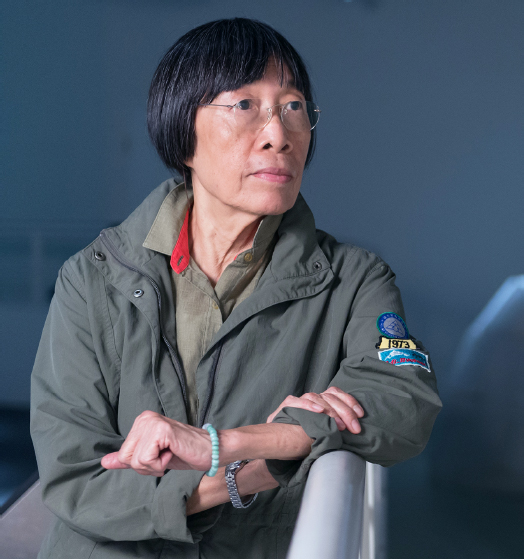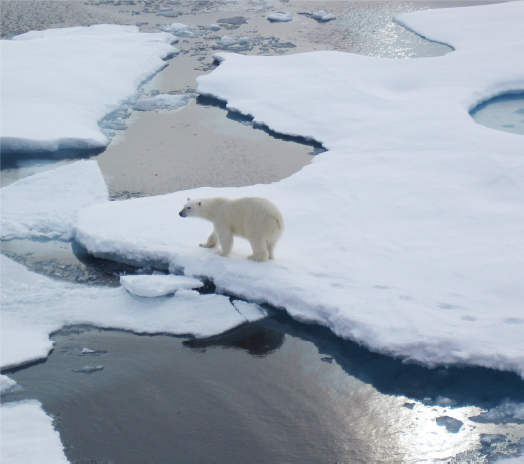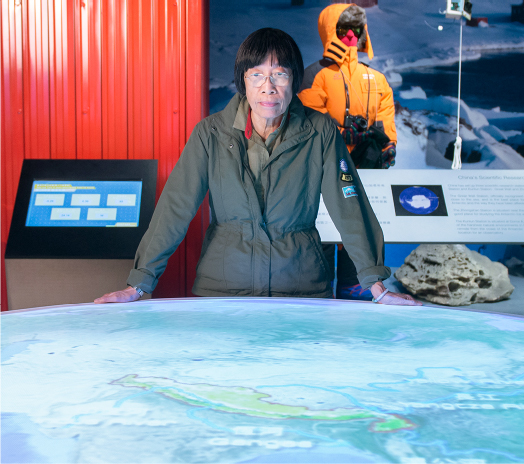Going to Extremes

Polar explorer, mountaineer, cancer survivor. There’s a lot that Dr Rebecca Lee has seen and done, and she is attempting to share it with the rest of the world through the Jockey Club Museum of Climate Change at the Chinese University of Hong Kong.
Lee is the first Chinese woman to tackle trips to both the South Pole and the North Pole and then to scale Everest. Ever since her first trip to Antarctica in 1985, she has been fascinated with these extreme places, their stark beauty and the information they can provide to scientists.
She has visited the Antarctic eight times in all, each time with a Chinese scientific-research trip, and has done the same in the Arctic 10 times. Her first climb on Everest was back in 1991.
The two poles “are like the two air conditioners that govern all the continents,” Lee explains. “For me it is all about curiosity.”
Studying such pristine environments yields plenty of knowledge about the effects of pollution and climate change. And there’s no doubt in her mind that global warming is having an impact.
“To me it is quite obvious, particularly in the Arctic. In 1987 there was a lot of snow, and it was quite easy to travel from one village to another,” Lee recalls. “But later on we had to be very careful. The ice is getting thinner and thinner.”
On her first trip to the Arctic she spent a month in northern Greenland, at the Thule Air Base and in a local village. It was there she learned survival skills from the native Inuit (also known as Eskimos), such as how to build an igloo, and how to get used to raw seal meat.
On subsequent trips she joined an icebreaker in China’s first Arctic Ocean research expedition. And on every occasion the icebreaker could move a little bit north as the ice melted.
“All the counties in the Arctic Circle are starting to look for energy, and the navigation is opened up so there are environmental problems as well,” Lee notes. That in turn affects marine biology, with water pollution harming fish and the first steps in the food chain.

Lee, trained in commercial design, funded her missions at first through her graphic-design company and by selling property in Hong Kong. Only later did she seek any sponsorship. One of her earliest aims was to share knowledge about the outside world with China, which was at the time in the early stages of opening up to the West.
“It was quite impressive watching the scientists work so hard in such an extreme environment – it touched my heart,” she recalls. “But I found that for the scientists, it is very difficult for them to promote their knowledge to the public.”
That’s where Lee’s training in the media world came in. She estimates she has taken 200,000 images on her explorations, as well as video footage.
She aims to share her experience with students and often lectures at Hong Kong universities and schools. Students need to broaden their horizons beyond the city, she feels. “There are so many things that the students need to learn,” she says. “There are so many problems. Young people need to open their eyes wide and see the world.”
It was after one lecture that she approached CUHK Vice-Chancellor Joseph Sung with the idea of creating the Museum of Climate Change, now celebrating its first anniversary. He immediately latched on to the idea and said the university would give the museum support and space.
Core samples from both poles and Mount Everest demonstrate rising levels of pollution globally. If pollution from as far away as Japan’s Fukushima Daiichi nuclear disaster can be found in the Himalayas, and climate change is melting the poles and glaciers, it’s a worrying sign for the world.
“The Himalayas are the water tower for Asia, including India, Thailand, and China as well,” Lee says. “If this water tower is half-melted, what are we going to go on?”
Lee blames her cancer on water pollution. On one trip, she spent two months on the north face and then south face of Everest. The Chinese base wasn’t fully ready and didn’t have its water treatment system up and running, so the team just drank snow melt. It turned out they were underestimating the amount of pollution it contained.

Lee, who turned 72 in August, discovered the cancer in 2000 but delayed treatment because she was busy with her work. Finally she had an operation in 2004 to remove 10 inches of her colon. Her doctor told her she probably only had two years to survive – but she told him that wasn’t long enough to complete digitizing all her photos. She has far exceeded his expectations.
Lee was honoured for achievements as the 2014 recipient of the gold medal from the Society of Women Geographers in Washington, D.C. Now she wants to turn her image collection over to the museum.
“What I want to do is finish all my work so I can live a few years for myself if I’m lucky – give me five years,” Lee says. “So I have finished my whole life. It’s good. I have no regrets. I gained a lot, and I learned a lot.”
by Alex Frew McMillan






